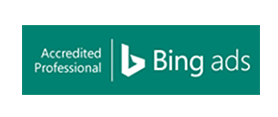It’s been a while since we’ve done a post on basic small business SEO tips, so while we like to flesh out our blog with innovative ideas and predictions, it’s also important to stay fresh on the things we learn first.
You may believe that SEO can only be done once and that’s it (that’s wrong) but even <title> tags (or often called meta title tags) need revisiting often, even for blog posts that you might have written years ago. If your page <title> tags were previously optimised, making small changes like adding or changing keywords can make all the difference and get pages ranking for things they weren’t showing up for before. Here’s an example of a title tag:
<title>What Is The Best Title Tag For Google?</title>
A Few Things to Remember
Any SEO expert worth their salt will tell you that the number one on-page ranking factor is the page title tags. Optimising a page title depends on what kind of content you’re making, and it isn’t a “one size fits all” kinda thing. A key thing to keep in mind when writing a well optimised title tag, is to make sure you stick to around 55 characters in length MAX as Google will not display anything longer.
I generally split the types of content up into these categories:
Home
Service Page
Location Page
Blog Post
There are other types of pages out there e.g. product pages, but they usually fit into one of these categories i.e. the page title for a product page is essentially the same as a blog post page, but with the name of the product, instead of the title of the post.
My Personal Recommendations
- Putting something is better than nothing – this seems obvious, but people who are still neglecting to optimise their page titles are missing out on the potential to bring in more visitors.
- Include the keyword – if you put it at the start, then it won’t get cut off by Google.
- Include the brand name – I tend to put it at the end so that if Google does need to cut down your page title, then it won’t be your most important keywords that get cut.
- Between 50-60 characters – so it isn’t short enough to be under-optimised or long enough to be cut off by Google.
- Capitalise the first letter of your keywords – this has no impact on your SEO but looks cleaner in search results, and you’ll attract the searcher’s attention to the words that matter most.
- Don’t capitalise everything/nothing – Although, as I just mentioned this has no SEO effect, you might be thinking “I’ll just capitalise everything!”. Whenever I see someone do this in search results in an attempt to get my attention, it just looks spammy and unprofessional.
- Don’t stuff it with keywords e.g. “Classic Motorbikes and Vintage Motorbikes by Mike | Mike’s Motorbikes” – This is a way of getting penalised by Google, which even if you do benefit from for a while, you’ll definitely get knocked back down, usually for longer than you were up for.
These aren’t rock-solid rules, there will be times when you’ll need to go over the character limit e.g. if a service needs to be explained in detail, but if you keep these in mind, you should be good to go.
Optimising Home Page <Title> Tags
If you’re writing a page title for your home page, this is going to need to contain your brand name, your location (if you have a physical location) and your main services. You don’t have much space to get creative here as you’re only allowed between 50-60 characters before it gets cut off, especially if your brand name is long or if you live somewhere like Llanfairpwllgwyngyllgogerychwyrndrobwllllantysiliogogogoch (whenever this town somehow comes up in conversation, I generally refer to it as “that long-named place in Wales”).
I doubt you have an overly excessive brand name or live somewhere which requires more than 5 seconds to pronounce, so you should keep each segment of the page title short and sweet.
My personal structure for home page titles is:
Service in Location | Brand
Example:
Vintage Motorbikes in London, UK | Mike’s Motorbikes
If you’ve got spare characters left over, you could also include things such as “Since 1940” or anything else that’s going to get the searcher’s attention.
Optimising Service Page <Title> Tags
Service pages are pretty self-explanatory, as the page title needs to include the service. You’ll want to really sell the service in this one, so something like Motorbike Restoration | Mike’s Motorbikes isn’t that great.
Instead, try;
Flawless Restoration for your Motorbike | Mike’s Motorbikes
While it’s not much more text because of the character limit, it’s more descriptive, so has more chance of catching attention and ranking for specific keywords.
Optimising Location Page <Title> Tags
Another self-explanatory title, this really just needs to have the attention focused on the location. This page title is used more by businesses who have multiple locations.
Example:
“London-based Vintage Motorbike Seller | Mike’s Motorbikes”
“Birmingham’s Vintage Motorbikes | Mike’s Motorbikes”
“Vintage Motorbike Seller in Manchester | Mike’s Motorbikes”
If you only have one location, you aren’t likely to need this. For example, if someone searches for something like “Motorbikes in London”, you’ll want your homepage to be there, not your location page. However, if you’ve got multiple locations, you’ll want your location pages to show up instead, as it’s hard to get your homepage ranking for lots of different locations.
Blog Post Page <Title> Tags
Blog post page titles are essentially just the blog post’s title, but more page title-friendly. So, if your blog post is “Removing rust from a Vintage Motorbike without damaging the paintwork” it could simply be:
“How to remove rust from a Vintage Motorbike | Mike’s Motorbikes”
By adding “How To…”, there’s more chance of showing up to people who type the question into Google. You’ll also need to think about what search terms you’re expecting this to show up for, because if you’re writing a blog post on “What colours work best for painting a Motorbike”, you should include keywords relating to that topic, such as “makeover”, “results”, “pros and cons”, “advice” as these are keywords more likely to get people to click.
People may say “but that’s clickbait!!!” Everything gets called clickbait today if it grabs attention. If your content is great and it’s what people are looking for, then it’s not clickbait. If your content forces people to view adverts and tells people what they already know/wasn’t looking for, then I’ve got some bad news…
Conclusion
And there we have it, and when it comes down to it, it’s not that confusing. If you stick to these ‘rules’ then you should be able to optimise your page titles successfully with no threat of being penalised (fingers crossed).
If you’re looking for more information on improving your website, I have written another post on what small businesses need for a successful website or if you want to find our more about outsourcing your SEO, then check out our blog on SEO packages for small businesses.






